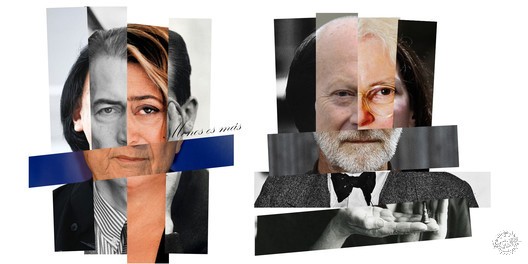
© Nicolás Valencia
What Should Architects Be Good At?
由专筑网李韧,曹逸希编译
所有建筑师在离开学校之后都有这样一种感觉,那便是他们不知道自己需要学习什么。设计吗?并不全对,技术细部?那么你也许不够专业,你需要一位专家来做这件事。你能完整地建造一座建筑吗?那么你还需要一些实际学习。那么,你到底应该学习什么呢?
在本文中,小编与大家分享了作为建筑师应该学习的6大技能。
抽象能力
在一个项目的初始阶段,你会需要有抽象的空间推导能力,这样才能更好地理解各个空间之中的三维组件。在许多包含有大量信息的建筑项目中,建筑师们常常应用的都是这种思考方式。对许多人而言,学习抽象思维都有些困难,但是对于建筑师而言,这种方法能够在脑海中构思出暂时不存在的物理空间形态,然后通过纸和笔将其记录下来,在之后的工作中按图施工。
理解空间所具有的多维度生活特性
人类祖先的洞穴和如今的住宅有着巨大的差别,建筑空间自身并不能满足人们的所有需求,但是就建筑师而言,我们需要把空间的特性分成多个层面来进行分析,例如照明、场地位置、空间比例、尺度、色彩、材质、通风、隔热、结构、肌理等等。而城市规划也一样,例如广场不仅仅只是广场,设计师需要考虑许多变量在内,以确保其获得成功。
多学科协调
就专业而言,过于全能的想法其实并不有利。这是一种莫名的自信,而非能力,整合不同学科与项目阶段,从而理解一个好的设计项目,其中也包括推销概念、规划施工体系、理解设计方案,亦或是结合各个专业。当然,曾经这也是一种提升建筑师自信心的方式,但是在今天,这种方法并不具有高效性。
软技能
社会并不会给予建筑师以优待,建筑设计与协调、协作以及创意相关。你需要和客户、施工方、专业人员进行沟通。每位人员都会给你的项目带来重大影响,那么这也是建筑师需要这样的软技能来表达项目、集合想法,以及接受批评。
设计思维
如果近期你有和商业人士进行过沟通,那么他们也许会在不了解你是建筑师的前提下与你谈论到设计思维,这种思维方式来源于我们的工作内容。西班牙建筑师Juan Herreros在2016年访问智利的时候说道:“也许这是一种思考与结合的方式,这种方式带来的结果便是我们所称之的‘项目’,它开始于零,但其中包含有大量的信息。这使得我们必须从其他的领域获得灵感。”其实,设计思维便是一种方法,这种方法贯穿整个创新领域。
最后,才是设计
放在最后的,才是设计,你没有必要像达芬奇一样能够构思出近乎完美的方案,但是作为一名建筑师必须了解平面布局的概念,这无关乎手绘还是计算机,但是学习多种绘图方式也有许多好处,尤其是将绘图和技术思维相结合,这种优势尤为明显。这二者是设计过程的基本内容,无论是蓝图还是最开始的设计理念。另外,让客户欣赏手绘作品也许更能加分,因为这会让你的概念看起来非常精彩。
There's a certain rare feeling that all architects share once they leave school: they don't know what they know. Design? Not really. Technical details? You'll need a specialist for that. Can you build this from scratch? I still need some practice. So, what do you really know?
In this article, we'll share six skills that you learned as an architect that you probably aren't even aware of.
The Ability of Abstraction
To even begin a project, you need to have the ability of completely abstract spatial reasoning to get a clear idea of the tri-dimensional components needed to fill an empty space or to undergo a remodeling. You can see this way of thinking in any architectural design that contains a considerable quantity of information. It's a challenge for many people to grasp abstract thought, but for architects, to create an abstract idea of physical space, put it on paper, and be able to explain it is all in a day's work.
Understanding the Multi-Dimensional Quality of Life that a Space Can Offer
There's a world of difference between the basic refuges of our ancestors and the dwellings of today. Living spaces per se don't satisfy all of our needs, and as architects, we understand the quality of life as a multi-dimensional analysis. Everything from lighting, placement, scale, proportions, colors, materials, ventilation, isolation, structure, and textures are taken into consideration. The same goes for urban planning as well: a plaza won't serve by just being a plaza, but because there are a number of invisible variables considered by all involved to ensure its success.
Multi-Disciplinary Coordination
The idea of the all-powerful architect has done us a lot of harm as professionals. It was a burst of confidence, rather than ability: the capacity to integrate different disciplines and stages, to understand that a good design doesn't stop: to sell your idea, to plan your construction, to understand your design, and to combine specialties. Sure, this was a way to lift the self-esteem of architects of the past, but today we know that this kind of talk doesn't get you anywhere.
Soft Skills
Society won't give you a pass just for being an architect. Architecture is as much about negotiation and integration as it is about creation. You need to converse with clients, builders, and specialists. Every one of them brings something important to the table and this is why architects need soft skills for presenting projects, integrating ideas, and accepting modifications.
Design Thinking
If you've talked with someone from the business world lately, it's likely they've mentioned design thinking to you without even knowing that you're an architect. It's a concept that comes directly from our line of work. "Maybe it's the way of thinking and integration -what we call a project- that includes an enormous quantity of information that begins with a single blank sheet. This is what makes us the object of observation from other fields," said Spanish architect Juan Herreros during a visit to Chile in 2016 in his talk about "Design Thinking," a methodology that can be found throughout the field of innovation.
Design
Last, but not least, is design. You don't have to be Leonardo DaVinci to come up with an impeccable design, but it is fundamental that an architect be able to illustrate their concepts via layout, be it by hand or computer; however, knowing how to draw offers a multitude of benefits, especially when paired with technical thinking. The two are fundamental throughout the design process, from the blueprints to the first laid cornerstone. Furthermore, it's always a plus for clients to see hand-drawn work. It makes your idea look even more brilliant!
|
|
